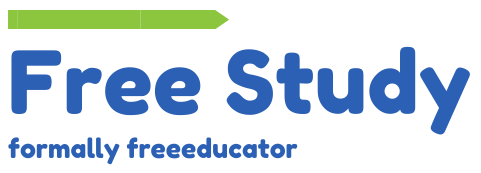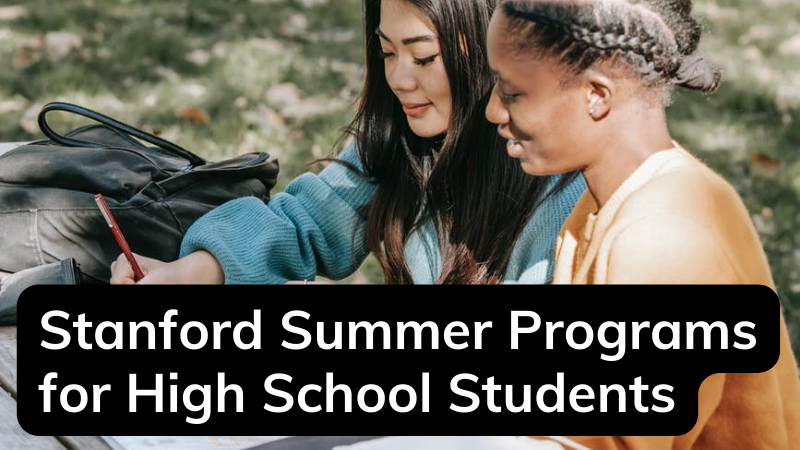Summer Programs are beneficial for students because summer courses primarily help students bridge the summer gap for knowledge acquisition. In this scenario, if you are looking out for summer courses, being a high school student, you can check out the Stanford Summer programs for high school students. The University offers various courses for students ranging from science, medicine, humanities, and other vocational courses.
You can now fruitfully use your summer vacation by enrolling in Standford summer programs for high school students. These courses will enhance your knowledge and help you to grow well. Before moving directly into the Stanford summer programs for high school students, lets us get a brief into the University, its mission, and also how the summer program, in general, helps high students for a better future.
Table of Contents
About Stanford University
Stanford University is the Vice Provost for Undergraduate Education’s guidance to undergraduate academics and opportunities. At Stanford, there are around 69 significant disciplines of study for students to choose from. Stanford University has about 7,000 undergraduate students. Find out more about the undergraduate program and the students who attend.
Stanford Summer Program for High School Students
Stanford Summer programs for high school students are a transformational enlightening process for high-achieving and ambitious individuals at a world-class university. Stanford Summer Session effectively communicates the University’s innovation culture, academic quality, and global responsibility by integrating demanding coursework with various extracurricular activities.
The regular 10-week term is compressed to 8 weeks during the Summer Quarter, and the course load is put new proportionately. Each unit worth credit represents about three hours of effort each week; however, workload varies depending on selecting a course of action and circumstances.
Introduction to Cultural and Social Anthropology
This course covers the fundamentals of anthropology and the discipline’s different view on social structure. Exploring vividly written anthropological examples that demonstrate how ethnographic methods reveal modern social and political concerns in various cultural contexts demonstrates this perspective’s potential.
Deatils
- Units 3 and 4
- Social Sciences and Humanities is an area of interest
- In-person, 8-week course format and length
- Pablo Seward is an instructor
- The dates are June 19, 2022, to August 12, 2022
Accelerated First-Year Chinese, Part 1
This course covers the fundamentals of anthropology and the discipline’s unique perspective on society and culture. Exploring eloquently written ethnographic cases that show how anthropological approaches illuminate modern social and political concerns in various cultural contexts demonstrates this perspective’s potential.
Details
- Units 3 and 4
- Social Sciences and Humanities is an area of interest
- In-person, 8-week course format and length
- Pablo Seward is an instructor.
- The dates are June 19, 2022, to August 12, 2022
Greek and Latin Roots of English
Introduction to principles of language history and etymology; terminology utilized in medicine, business, education, law, and the humanities. The goal of learning the Greek and Latin components of English is to improve vocabulary, written English comprehension, and standardized test scores. The creation of the vocabulary is studied in terms of patterns and processes. It is not necessary to know Greek or Latin. This course will be best suitable for pupils looking out for Stanford summer programs for high school students.
Details
- Units 3 and 4
- Social Sciences and Humanities is an area of interest.
- In-person, 8-week course format and length
- The dates are June 19, 2022, to August 12, 2022
Greek Mythology
The heroic and divine in archaic Greek literature, mythology, and society. Individuals and society are studied using an interdisciplinary approach. Lectures with illustrations. Homer, Hesiod, Herodotus, and lyric and tragedy poets are read in translation.
Details
- Units 3 and 4
- Social Sciences and Humanities is an area of interest
- In-person, 8-week course format and length
- The dates are June 19, 2022, to August 12, 2022
History of YouTube
With over 1 billion monthly viewers since its introduction in 2005, YouTube has risen to become the world’s second most popular website. It has impacted the entertainment, political, and business spheres. It has catapulted the careers of A-list celebrities while also establishing a brand-new celebrity ecosystem. It has become a critical political instrument for presidential contenders and political subcultures alike. It has thrown the entertainment industry and much of its business model into disarray in the process. Since its inception, it has also been a source of debate, with questions raised about its role in promoting cyberbullying, radicalization, and harmful content. The cultural history of the platform will be covered in this course.
Details
- Units 3 and 4
- Social Sciences and Humanities is an area of interest
- In-Person Course Format & Length
- Instructors will be Lewis and Becca
- The dates are June 19, 2022, to August 12, 2022
Digital Media & Personalization
People who use digital media platforms leave a data trail that can be exploited to peep into their heads and infer psychological traits. How can the digital traces of individuals be used to predict their personality traits? What can be done to customize communications and increase persuasive appeal based on their expected personal characteristics?
We’ll look at research from media psychology, personality psychology, cognitive sciences, political science, computer science, and neuroscience to learn about the core psychological principles underpinning this course’s reasonable personalization efforts. This course will be built on a discussion and debate structure, in which students will learn by engaging in critical and collaborative conversations with their peers.
Details
- Units 3 and 4
- Social Sciences and Humanities is an area of interest
- In-person, 8-week course format and length
- Sumer Vaid, Sumer Vaid, Sumer Vaid, Sumer Vaid
- The dates are June 19, 2022, to August 12, 2022
Into the Metaverse: Designing the Future of Virtual Worlds
This course will draw on various fields to provide a comprehensive understanding of virtual worlds, from psychological and behavioral mechanisms that shape how people perceive virtual humans to the design of virtual spaces and interactions to ethical considerations that shape how virtual worlds are regulated. This course will be best suitable for pupils looking out for Stanford summer programs for high school students.
Details
- Units 3 and 4
- Social Sciences and Humanities is an area of interest
- In-person, 8-week course format and length
- Eugyoung Han, Eugyoung Han, Eugyoung Han, Eugyou
- The dates are June 19, 2022, to August 12, 2022.
- There are no prerequisites
Why is Climate Change Unbelievable
The evidence is in the pudding. Why are people still refusing to acknowledge one of the most severe risks to humanity’s survival?
To answer this question, an interdisciplinary approach is needed, looking into many ways global warming has been studied, imagined, represented, and evaluated. The course will follow two parallel tracks: on the one hand, it will examine literary representations and arguments; on the other hand, it will use a series of workshops and site visits in the Bay Area to create a sensibility for how climate change manifests itself in the real world.
Details
- Units 5 and 6
- Social Sciences and Humanities is an area of interest
- In-person, 8-week course format and length
- David Palumbo-Liu, David Palumbo-Liu, David Palumbo-Liu
- The dates are June 19, 2022, to August 12, 2022
Principles of Economics
This program is an economics introduction course. The primary purpose is to develop and expand your knowledge of economists’ analytical tools and methodologies. The University will include the study of both microeconomics (examining findings by individuals and businesses) and macroeconomics (dissecting the economy as a total). This course will assist you in deciphering economic news and statistics at a deeper level, as well as creating your economic judgments. Those who desire to pursue intermediate microeconomics and intermediate macroeconomics, and potentially beyond, will benefit significantly from this course.
Details
- Units 5 and 6
- Social Sciences and Humanities is an area of interest
- In-person, 8-week course format and length
- John Taylor and Mark Tendall are the instructors.
- The dates are June 19, 2022, to August 12, 2022
Money and Banking
Students will learn the logic, intuition, and functioning of a financial system, including money, financial markets (financial and capital markets, debt and stock markets, derivatives trading), and financial firms and intermediaries. The material will be quantitative and qualitative but always very analytical, emphasizing active learning – resolving quantitative finance problems will receive roughly equal attention. Students will be rewarded for displaying the capacity to reason with challenging troubles with which they are unfamiliar rather than memorizing and regurgitating data. Put another way, money and capital move between agents through time, both directly and through organizations.
Details
- Units 5 and 6
- Social Sciences and Humanities is an area of interest for me.
- In-person, 8-week course format and length
- Greg La Blanc is one of the instructors
- The dates are June 19, 2022, to August 12, 2022
Genocide and Humanitarian Intervention
The course examines the history of genocide in the twentieth century and the issue of moral intervention to prevent it, a topic that has sparked heated debate since the end of the Cold War. Before the 1990s began with the Armenian genocide during World War I, continued with the Holocaust, and concluded with Cambodia underneath the Khmer Rouge in the 1970s. The wars in Bosnia, Rwanda, Kosovo, the Congo, and Sudan have been covered in genocide and humanitarian intervention during the 1990s. The course’s last session will be dedicated to studying the International Criminal Court and the many criminal courts entrusted with investigating and punishing genocide criminals.
Details
- Units 4 and 5
- Fields Of social science and Humanities are an area of interest
- In-person, 8-week course format and length
- Bertrand Patenaude, Bertrand Patenaude, Bertrand Patenaude, Bert
- The dates are June 19, 2022, to August 12, 2022
The Philosophy of Inaction
This class will look at the benefits of not acting globally and historically. This course will be best suitable for pupils looking out for Stanford summer programs for high school students.
Details
- Units 3 and 4
- Social Sciences and Humanities is an area of interest
- In-person, 8-week course format and length
- Dowling and Grant are the instructors.
- The dates are June 19, 2022, to August 12, 2022
Introduction to Formal Methods in Philosophy
Students will gain a rudimentary understanding of the most significant arithmetic and logical techniques in psychology in this class. The learner will learn essential tools for modeling sound reasoning, such as propositional and predicate logic. Following that, the course will look at modal reasoning, probability and statistics, probabilistic reasoning, and behavioral economics, focusing on their applicability to philosophical issues and the tools that will serve as the foundation for the rest of the course.
Details
- Units 3 and 4
- Social Sciences and Humanities is an area of interest.
- In-person, 8-week course format and length
- JT Chipman, JT Chipman, JT Chipman, JT Chipman, J
- The dates are June 19, 2022, to August 12, 2022
Introduction to International Relations
Techniques to the analysis of global conflict and cooperation. War, terror, trade policy, ecology, and global poverty are examples of applications. Deliberations on the morality of war and global income distribution. This course will be best suitable for pupils looking out for Stanford summer programs for high school students.
Details
- Units 4
- Social Sciences and Humanities is an area of interest.
- In-person, 8-week course format and length
- The dates are June 19, 2022, to August 12, 2022
Conclusion
So, these are some of the Stanford summer programs for high school students. You can check out the course details provided along with the options above and choose your eligible program. These programs will enable you to enhance your skills and depth in your knowledge acquisition as a high school student. This summer, let’s use it in a better way through these fantastic courses.









 Scholarships for Black Students Going Unclaimed
Scholarships for Black Students Going Unclaimed